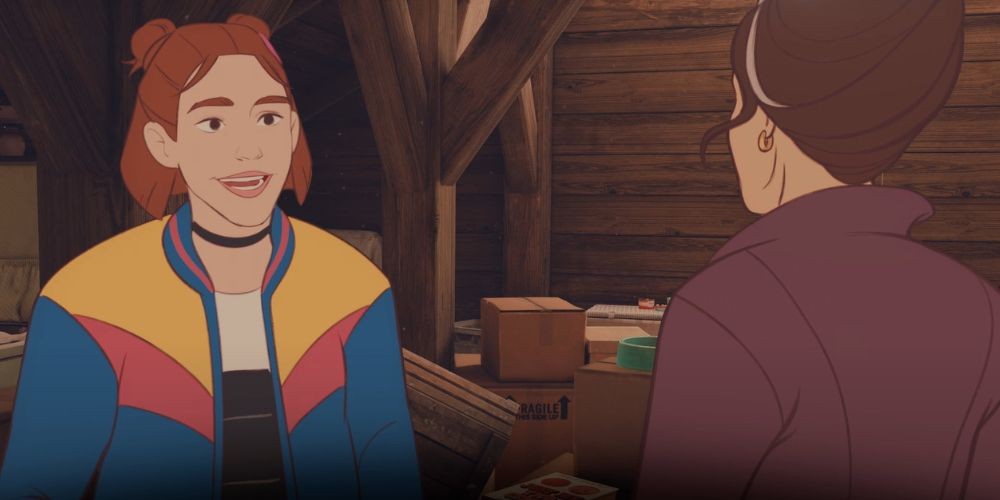Navigating Nostalgia: The Subtle Beauty of Open Roads
Jul-17-2024

In the expanding universe of video games, some titles lure players with dreams of epic adventures, while others root themselves firmly in the soil of everyday life. Open Roads is an example of the latter — a game that isn’t about slaying dragons or interstellar travel, but simple, human connection. Touted as a family mystery, Open Roads is different from most games one might encounter. Upon my initial exposure to its demo earlier this year, nothing seemed particularly thrilling or mysterious. A teenager, Tess, strolled around a house, inspecting objects and chatting with her mother. The lack of dramatic highs left me wary. However, diving deeper into the actual gameplay, it became clear that Open Roads doesn’t thrive on grand ambitions; rather, it spins a story out of small, significant details.
Setting the Stage

The narrative kicks off with Tess at the forefront. It’s her curiosity following her grandmother’s passing that drives the unfolding story. Tess’s journey begins in her grandmother’s house — a place cozy with memories and traces of a life lived. You, as Tess, find yourself packing up, gradually revealing the reasons why it's time to leave this abode. The game doesn’t spoon-feed information; instead, it lets you unearth truths as you traverse Tess’s world.
The Mechanics of Interaction
Open Roads is about exploration. You move through environments, examining nearby objects that trigger Tess to call out to her mother, often leading to meaningful conversations. Occasionally, Tess reflects inwardly, sharing observations on her phone. These interactions are the core of the game. Tess’s mother is ever-present, a character central to the narrative but seldom stepping outside her defined role. Unlike traditional games that promise puzzles laden with complexities, Open Roads boasts only a few minor challenges and dialogue choices, maintaining focus on its storytelling fabric.
Crafting Atmosphere
Despite its minimalistic approach, Open Roads excels in creating a vivid sensory experience. High production values bring the world to life. Ambient sounds — birdsong, distant planes, nearby home activities — coupled with sunlight pouring softly through windows create an immersive atmosphere, slowing players down to the game's gentle tempo.

The delight in Open Roads lies in the tangible objects you manipulate. Set in the early 2000s, the game fondly resurrects a pre-smartphone era. Delicate recreations of yearbooks, newspaper clippings, printed photographs, and handwritten letters aren't just props but seamlessly fuel your investigation, appearing convincingly real with meticulous details right down to the rust on tin cans.
Visual and Auditory Aesthetics
The game environments rival photorealism, contrasting sharply with the magazine cutout-like characters who show limited animation. These characters, though sometimes awkward in silent moments or blurred close-ups, manage to fit snugly within the broader visual aesthetic of the game. This visual dichotomy might occasionally seem jarring, but most often, it melds cohesively within the narrative flow.
Voice Acting as the Backbone
Given the limited character animations, voice acting carries the narrative weight. Talented actors bring life to the story. Kaitlyn Dever infuses Tess with youthful energy, while Keri Russell as Opal, Tess’s mother, emanates authenticity and fatigue that resonates deeply. The performances, even when they narrowly dodge cheesiness, underscore the game's quality and help anchor the player's emotional investment.
The Journey's End

The main draw of Open Roads is its heartfelt journey, marked by the poignant evolution of the mother-daughter duo, Tess and Opal. The unfolding mystery provides the means for introspection and mutual understanding between the characters, culminating in a warmly resonant conclusion. This adventure, though short and sweet, successfully touches on values of maturity and familial reconciliation.
However, the brevity of Open Roads might elicit mixed reactions. On one hand, it’s refreshing to see a game embrace a concise two-and-a-half-hour storyline amidst an industry often obsessed with hour-heavy narratives. On the other, questions arise about the lengthy four-year development time, hinting at potential production challenges. While the final product is undoubtedly pleasant, it lacks the memorability that might justify the extended creative process.
Final Thoughts
Despite the game’s modest scope, Open Roads offers a pleasant detour from conventional gaming experiences. It's a brief yet intimate journey, heavy with emotional undertones. While it may not stay with you long after the screen dims, it does provide a heartwarming escape to a simpler time, and the chance to witness Tess and Opal bridge the gaps in their relationship. Perhaps it’s the game's very simplicity and modesty that form part of its charm — a gentle reminder that sometimes, the most significant stories are found within the smallest details.








Leave a comment
Your comment is awaiting moderation. We save your draft here
0 Comments